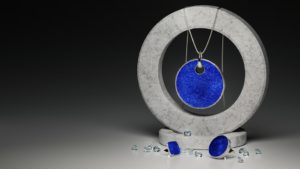
Jewelry art has always been considered one of the most difficult, because for many stages of work, painstaking manual labor was used. With the advent of 3D printers in this form of art, a real revolution took place, because now you can create a three-dimensional model on a computer and get its high-quality implementation with the help of 3D printing. Additive technologies allow creating truly exclusive jewelry, while their cost price will be much lower than if they were made in the traditional way.
The possibilities of 3D printing in jewelry
Additive technologies in jewelry art develop in two directions:
- creation of quality master-models for making ornaments and decorative products;
- printing of finished jewelry products.
Prototyping of ornaments and decorative products allows completely to exclude such actions as rolling, sawing, bending, soldering, etc. After creating a three-dimensional model, the wizard can print it out of wax or polymers, cover with gypsum and in this way obtain a finished shape for casting the final product.
3D-printed master-models have undeniable advantages: they help create an ornament that does not need to be modified, and also significantly save time and consumables for creating a form. In addition, if the prototype is not liked by the master, then it can correct the corresponding 3D model, rather than rework the product.
Also on a 3D printer you can print finished products from polymers and metals. In the second case, the technology of selective laser sintering (SLS) or melting method (SLM) is used. Modern equipment allows you to achieve a fairly high resolution when printing jewelry, which makes their quality impeccable. However, specialized 3D printers and powder metals are too expensive, so not every jeweler can afford to use these technologies to print finished products.
What 3D printers are used for jewelry business?
Since 3D-printing of jewelry is considered to be one of the most promising directions, the corresponding equipment appeared on the market, which was confined to the needs of jewelers. Below we will consider popular models of 3D printers, with the help of which jewelry masterpieces are created today.
Solidscape is a device that creates products using Dwax, SCP and DODJet technologies. Prototypes of jewelry are made in the ModelWorks simulation program. After that, the consumables are loaded into the cartridge, where they are melted, and the object is formed by the layer-by-layer method.
DigitalWax is a 3D printer that provides high speed, with a print resolution of 10 microns. Works on SLA technology.
Envisiontec Perfactory is a company that produces equipment for rapid printing of master models of the highest quality, which, naturally, affects the quality of the final products. 3D printers of the Perfactory line work mainly on DLP technology, which provides excellent detailing of objects.
Asiga Freeform Pico is a 3D printer from Asiga, which uses the LED light source to create the product, which results in high accuracy of printing.
These are only the most popular 3D printers that are used in jewelry art. In fact, they are much larger. And, moreover, every year on the market there are all new unique devices that offer absolutely unordinary solutions for 3D printing of ornaments. For example, experts Autodesk Research and Carnegie University staff – Mellon invented the technology Exoskin, which allows you to print jewelry directly on the skin.
Examples of the introduction of 3D printing in jewelry business
When you look at 3D print decorations, you understand that the possibilities of additive technologies are limited only by the imagination of designers.
For example, employees of the American company Nervous System constantly surprise the world with their unconventional ideas. When implementing one of the projects, the company used the method of direct laser metal sintering (DMLS), so it was able to create an exclusive gold ornament.
The French jewelry house Jaubalet also actively uses additive technologies to create jewelry. The specialists of the company accept orders from customers, create a three-dimensional wax model, according to their wishes, on the basis of which a unique piece of jewelry is then made. It is worth mentioning that such a service is very popular, as clients from all over the world are turning to the company.
Prospects of 3D printing in jewelry business
As already mentioned above, making jewelry using a 3D printer is one of the most promising and rapidly developing areas. The use of innovative technologies makes it possible to make really original, single products that could not have been created by traditional methods.
In addition, 3D printing makes it possible to significantly reduce the production time and production costs, due to which the cost of jewelry is also reduced.
But most importantly, 3D printing allows private jewelers to enter the world market and compete with well-known companies, as the quality of jewelry will largely depend on the model of 3D-printer and mastery of the designer.
Individual approach, original design, high production speed, affordable cost and the ability to make quality products at home are the main factors that make it possible to state with certainty that additive technologies in jewelry business have a great future and in the near future can completely transform this industry.
Image Credit: MasterTux
